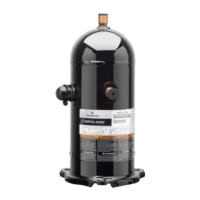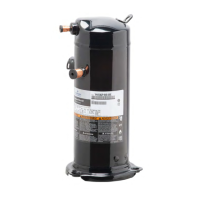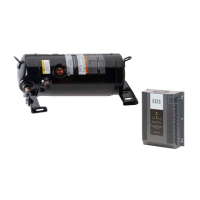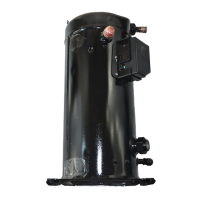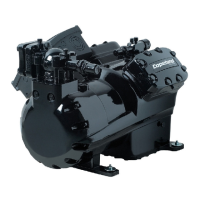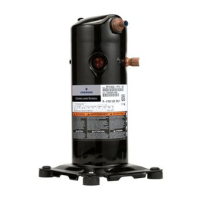34 AGL_HP_VS_YHV_RG_RT_EN_Rev00
6.2 Preparation and work procedure
A work procedure shall be provided in the preparation stage. All maintenance staff and other
personnel working at the site shall be instructed on the nature of the work being executed.
If any work is to be conducted on the refrigeration systems or any associated parts, appropriate fire
extinguishing equipment shall be provided. Dry powder or CO
2
fire extinguishers are considered
appropriate. Confirm that appropriate fire extinguishing equipment is available near the work area.
Prior to starting to work on systems containing flammable refrigerants, safety checks are necessary
to ensure that the risk of ignition is minimized.
Work shall be undertaken under a controlled procedure so as to minimize the risk of a flammable
gas or vapour being present while the work is being performed.
Avoid working on systems filled with flammable refrigerant in a confined space.
6.3 Exchanging the refrigerant
Air/A2L or A3 refrigerant mixture in a potentially flammable or explosive
atmosphere! Fire and explosion hazard! In any case avoid air/A2L or A3
ref rigerant mixture in the refrigeration system. Make sure that the system is
filled with pure A2L or A3 ref rigerant. In the event that the refrigerant needs
replacing, the charge should be recovered using A2L- or A3-
ref rigerant recovery unit and recycling bottles.
Low suction pressure operation! Compressor damage!
with a restricted suction. Do not operate with the low-
pressure limiter bridged.
Do not operate compressor at pressures that are not allowed by the operating
envelope.
Allowing the suction pressure to drop below the envelope limit for
more than a few seconds may
overheat scrolls and cause early drive bearing
and moving parts damage.
For qualified refrigerants and oils, see section 2.6.1.
It is not necessary to replace the refrigerant with new unless contamination due to an error such as
topping up the system with a non-condensable gas or incorrect refrigerant is suspected. To verify
correct refrigerant composition, a sample can be taken for chemical analysis. A check can be made
during shutdown by comparing the refrigerant temperature and pressure using precision
measurements at a location in the system where liquid and vapour phases are present and when the
temperatures have stabilised. In the event that the refrigerant needs replacing, the charge should be
recovered using a suitable recovery unit.
6.4 Disassembling system components
When disassembling system components please follow the main steps described hereunder:
1. Recover refrigerant and evacuate system using an A2L- or A3-dedicated recovery unit and
vacuum pump. All the refrigerant shall be recovered to avoid significant release. Ensure that the
outlet of the vacuum pump is not close to any potential ignition source and that ventilation is
available.
2. Flush system with inert gas (dry nitrogen). Compressed air or oxygen shall not be used for
purging refrigerant systems.
3. For both A2L and A3 refrigerant systems, the procedure of evacuation and flushing with oxygen-
free nitrogen may need to be repeated until no refrigerant is present in the system. When the
final oxygen-free nitrogen charge is used, the system shall be vented down to atmospheric
pressure to enable work to take place.
4. Disassemble components with a cutting tool.
5. Drain, recover and dispose of compressor oil as appropriate.

